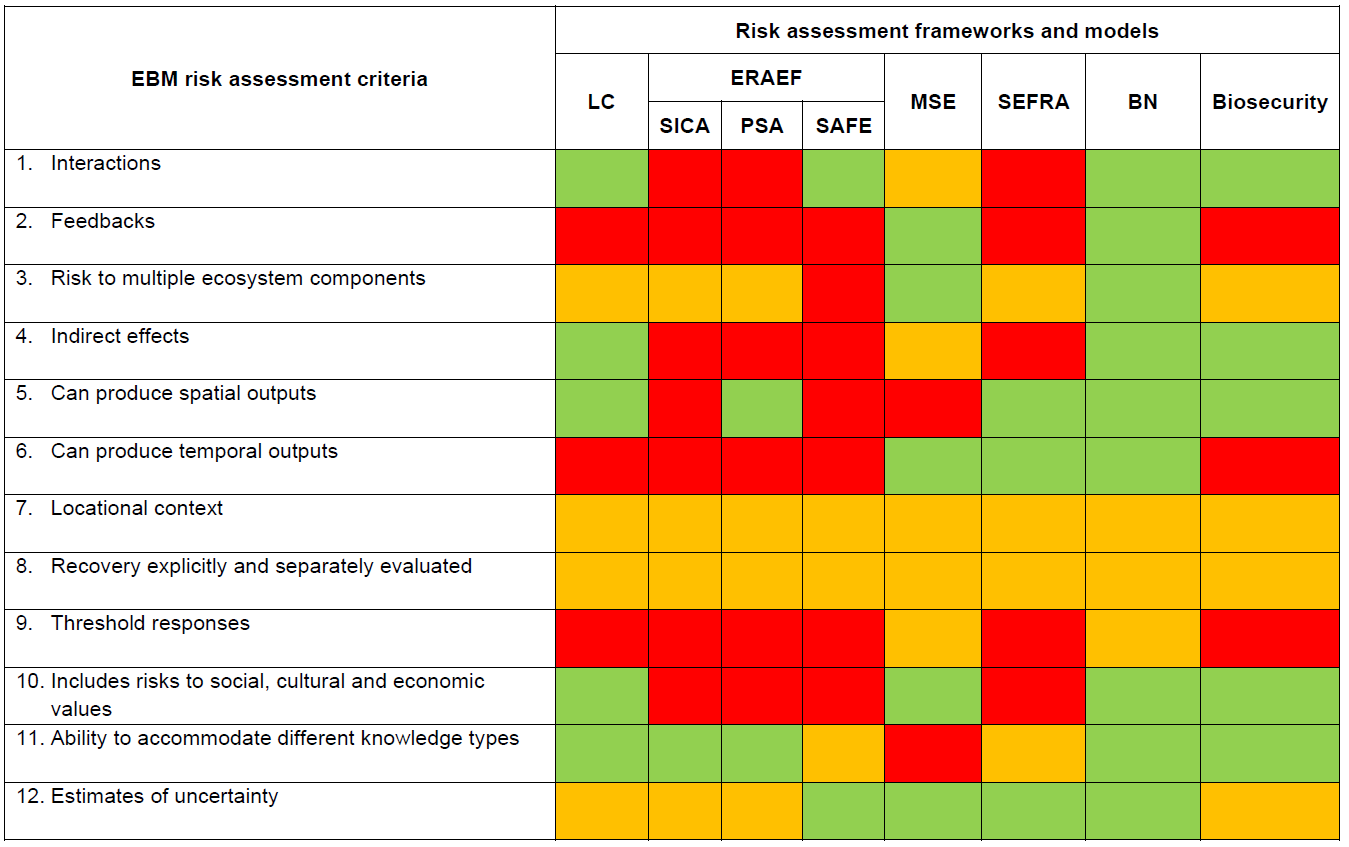- Report
A review of risk assessment frameworks for use in marine ecosystem-based management (EBM) in Aotearoa New Zealand
Clark DE, Gladstone-Gallagher R, Stephenson F & Ellis J (May 2021)
We reviewed the existing risk assessment methods and frameworks to determine their suitability for supporting EBM in Aotearoa New Zealand including the needs and aspirations of Māori.
DOWNLOAD
Our research co-development partners identified 6 methods and frameworks used in Aotearoa New Zealand for assessing risk in the marine environment. These are:
- Likelihood-Consequence (LC)
- Ecological Risk Assessment for the Effects of Fishing (ERAEF); includes Scale-Intensity Consequence Analysis (SICA), Productivity-Susceptibility Analysis (PSA) and Sustainability Assessment for Fishing (SAFE)
- Management Strategy Evaluation (MSE)
- Spatially Explicit Fisheries Risk Assessment (SEFRA)
- Bayesian Networks (BNs), and;
- general approaches for assessing marine biosecurity risks.
These risk assessment methods were assessed against 12 criteria considered important for aligning with the principles of EBM in Aotearoa New Zealand. The ability to assess risk to multiple ecosystem components, accommodate multiple knowledge types and assess risk to other values were identified by our research co-developers as being important criteria for supporting Māori needs and aspirations.
Key findings
This table outlines the performance of the 6 frameworks and models against the 12 criteria.
- Of the risk assessment frameworks currently in use in Aotearoa New Zealand, only BNs met all 12 criteria required to support EBM and the needs and aspirations of Māori.
- Most methods can assess risk to multiple ecosystem components, however, risk to each component is usually assessed separately, rather than in an integrative manner (the latter would be most useful as is generally necessary for EBM).
- Co-development partners ranked BNs highest when reviewing risk assessment methods for both informing EBM and supporting Māori needs and aspirations, with MSE and SEFRA also ranked highly.
- International advances of risk frameworks for EBM include consideration of hierarchical, Coupled Natural Human approaches as well as cumulative impact mapping.
We also present a summary of the findings from a research co-developer elicitation workshop that discussed whether these risk assessment methods and frameworks are useful for risk assessment within a kaupapa Māori (with regards to Māori values and aspirations) and EBM context.
Audience
This report is for scientists, marine managers, iwi and stakeholders carrying out or managing activities in the marine environment including:
- Aquaculture
- Fisheries
- Resource management (eg by regional councils)
- Oil and gas
- Biosecurity
- Maritime transport (eg shipping, cruise ships)